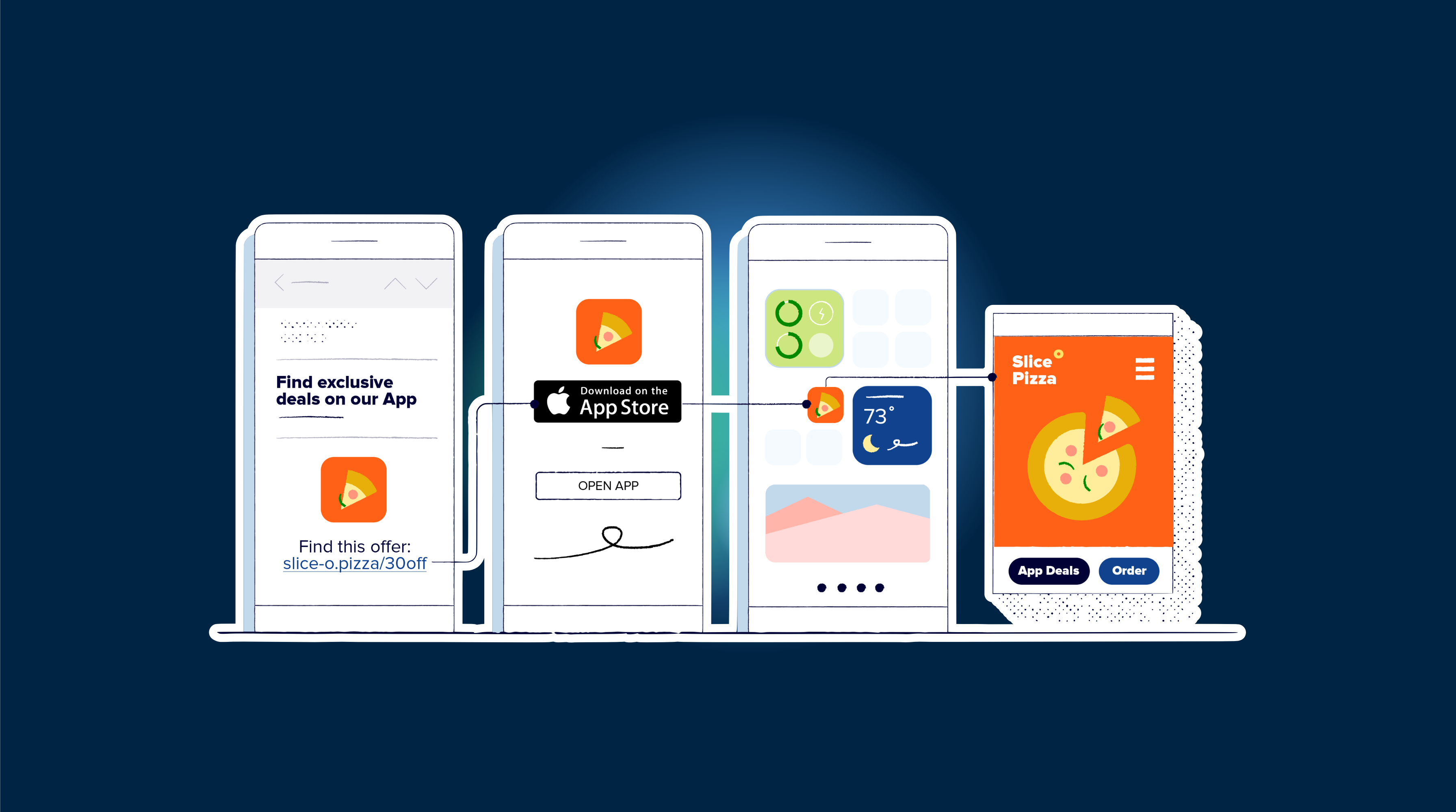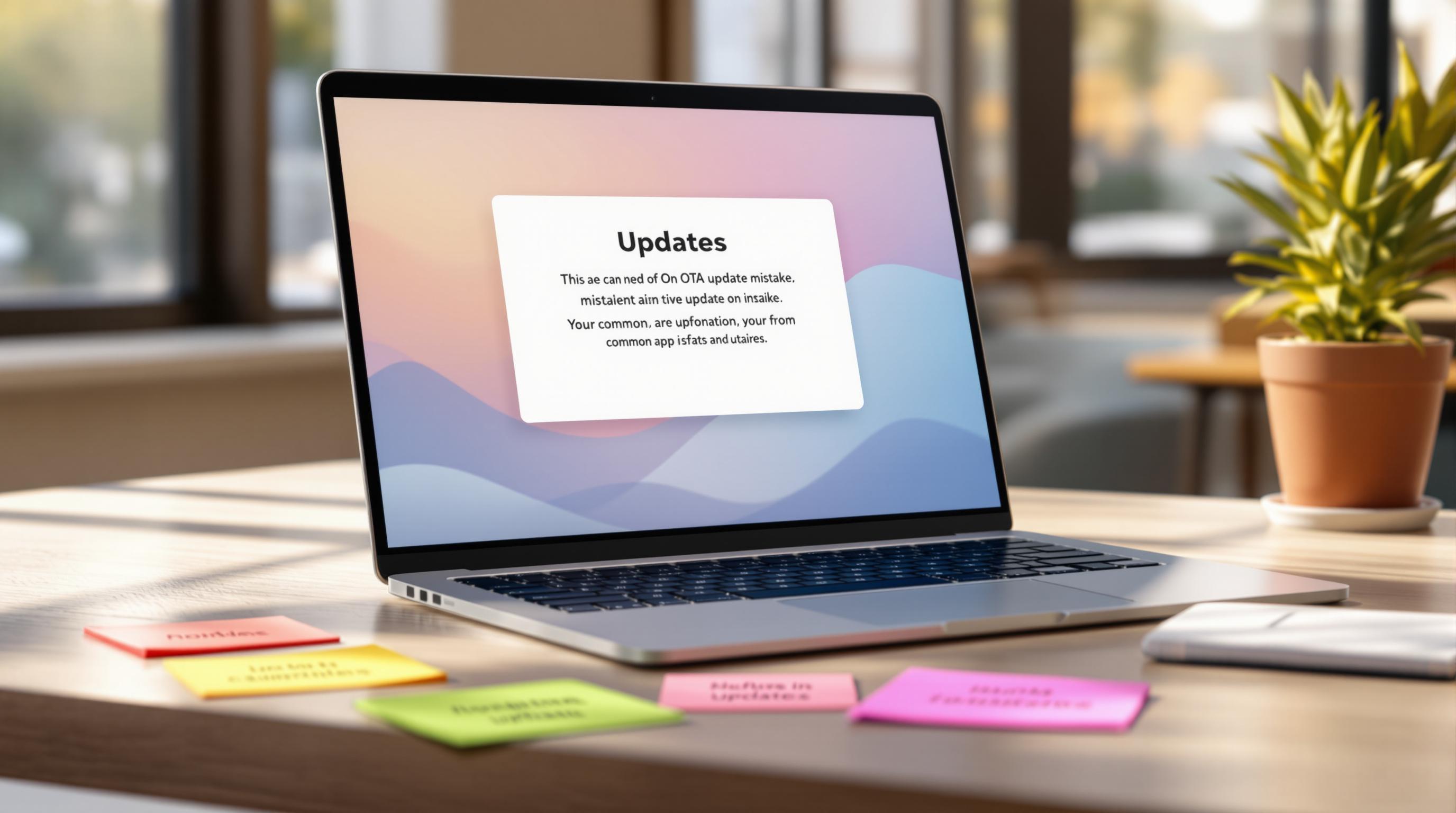iOS의 유니버설 링크와 Android의 앱 링크를 사용하면 사용자가 브라우저를 거치지 않고 링크를 통해 직접 앱으로 이동할 수 있습니다. 이는 특히 사용자 경험을 개선하고 웹 페이지에서 앱으로의 컨텍스트를 유지하는 데 유용합니다. 이 가이드에서는 Capacitor를 사용하여 Nextjs 앱에서 이러한 딥 링크를 설정하는 과정을 설명하겠습니다.
딥 링크 설정은 많은 코드가 필요하지 않지만 일부 구성이 필요합니다. 이 가이드를 마치면 https://www.capgo.app/details/22와 같은 링크를 클릭하여 앱이 설치되어 있다면 올바른 페이지로 앱이 열리게 됩니다.
Nextjs 딥 링크 설정
먼저, 새로운 Nextjs 앱과 테스트를 위한 상세 페이지를 만들어보겠습니다:
npx create-next-app@latest capgoLinkscd capgoLinksmkdir pages/detailstouch pages/details/[id].jsnpm run buildnpx cap add iosnpx cap add androidcapacitor.config.json 파일에서 번들 ID가 올바르게 설정되어 있는지 확인하세요. 이는 설정에 매우 중요합니다:
{ "appId": "com.capgo.deeplinks", "appName": "capgoLinks", "webDir": "out", "bundledWebRuntime": false}라우팅의 경우, Nextjs는 파일 기반 라우팅을 사용하므로 pages/details/[id].js에 파일을 생성함으로써 이미 와일드카드 라우트를 설정했습니다.
pages/details/[id].js에서는 Nextjs의 내장 라우터를 사용하여 URL에서 ID를 가져올 수 있습니다:
import { useRouter } from 'next/router'
function DetailsPage() { const router = useRouter() const { id } = router.query
return ( <div> <p>My ID: {id}</p> </div> )}
export default DetailsPage이제 Capacitor로 appUrlOpen 이벤트를 처리해보겠습니다. 이 이벤트는 앱이 사용자 정의 URL 스키마를 통해 열릴 때 트리거됩니다. pages/_app.js 파일에 리스너를 추가하세요:
import { useEffect } from 'react'import { App } from '@capacitor/app'
function MyApp({ Component, pageProps }) { useEffect(() => { App.addListener('appUrlOpen', (event) => { const slug = event.url.split('.app').pop() if (slug) window.location.href = slug
}) }, [])
return <Component {...pageProps} />}
export default MyApp이 코드는 appUrlOpen 이벤트를 수신하고 Nextjs 앱 내에서 적절한 라우트로 이동합니다.
iOS 구성
iOS의 경우, Associated Domains가 활성화된 앱 ID가 필요합니다. YOURTEAMID와 com.your.bundleid를 실제 팀 ID와 번들 ID로 대체하여 다음 내용으로 apple-app-site-association 파일을 만드세요:
{ "applinks": { "apps": [], "details": [ { "appID": "YOURTEAMID.com.your.bundleid", "paths": ["*"] } ] }}이 파일을 도메인의 .well-known 디렉토리에 업로드하여 https://www.capgo.app/.well-known/apple-app-site-association에서 접근할 수 있도록 하세요.
Xcode에서 applinks:capgo.app 형식을 사용하여 앱의 권한에 도메인을 추가하세요.
Android 구성
Android 앱 링크를 위해 다음 단계를 따르세요:
- 키스토어 파일이 없다면 생성하세요.
- 키스토어에서 SHA256 지문을 얻으세요.
- 패키지 이름과 SHA256 지문이 포함된 assetlinks.json 파일을 만드세요.
- 이 파일을 도메인의
.well-known디렉토리에 업로드하세요.
AndroidManifest.xml의 딥 링크를 처리하는 activity 요소에 intent-filter를 추가하세요:
<activity ...> <intent-filter android:autoVerify="true"> <action android:name="android.intent.action.VIEW" /> <category android:name="android.intent.category.DEFAULT" /> <category android:name="android.intent.category.BROWSABLE" /> <data android:scheme="https" android:host="capgo.app" /> </intent-filter></activity>assetlinks.json 파일을 업로드한 후, Google의 Digital Asset Links 도구를 사용하여 확인할 수 있습니다. 모든 것이 올바르게 설정되면 녹색 체크마크가 표시됩니다.
앱을 빌드하고 서명하려면 다음 명령어를 사용하세요:
cd android./gradlew assembleReleasecd ..jarsigner -verbose -sigalg SHA1withRSA -digestalg SHA1 -keystore my-release-key.keystore android/app/build/outputs/apk/release/app-release-unsigned.apk alias_namezipalign -v 4 android/app/build/outputs/apk/release/app-release-unsigned.apk capgo.apkadb install capgo.apk이렇게 하면 연결된 Android 기기에 서명된 앱이 설치됩니다.
네이티브 프로젝트 설정을 위한 Capacitor 구성
네이티브 프로젝트 설정을 자동화하려면 Capacitor configure 패키지의 사용을 고려해보세요. 프로젝트에 설치하세요:
npm install @capacitor/configure프로젝트 루트에 capacitor.config.yaml 파일을 생성하세요:
vars: BUNDLE_ID: com.capgo.deeplinks PACKAGE_NAME: com.capgo.deeplinksplatforms: ios: targets: App: bundleId: $BUNDLE_ID entitlements: - com.apple.developer.associated-domains: ['applinks:capgo.app'] android: packageName: $PACKAGE_NAME이 구성으로 configure 도구를 실행하세요:
npx cap-config run capacitor.config.yaml이렇게 하면 YAML 파일에 지정된 설정이 네이티브 프로젝트에 적용됩니다.
결론
Nextjs 앱에서 Capacitor를 사용하여 딥 링크를 설정하는 것은 iOS와 Android 모두에 대해 도메인과 프로젝트 설정을 구성하는 것을 포함합니다. 이 과정은 세심한 주의가 필요하지만, 이전 방식에 비해 간소화되었으며 추가 플러그인이 필요하지 않습니다. 도메인 확인 파일이 올바르게 제공되는지 확인하고 각 플랫폼의 도구로 확인하세요. 설정이 완료되면 앱이 웹 링크에서 원활하게 열리며, 사용자가 웹에서 앱으로 자연스럽게 전환할 수 있습니다.




